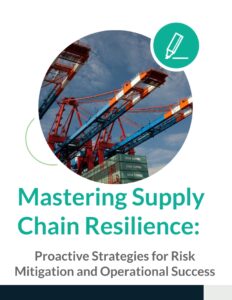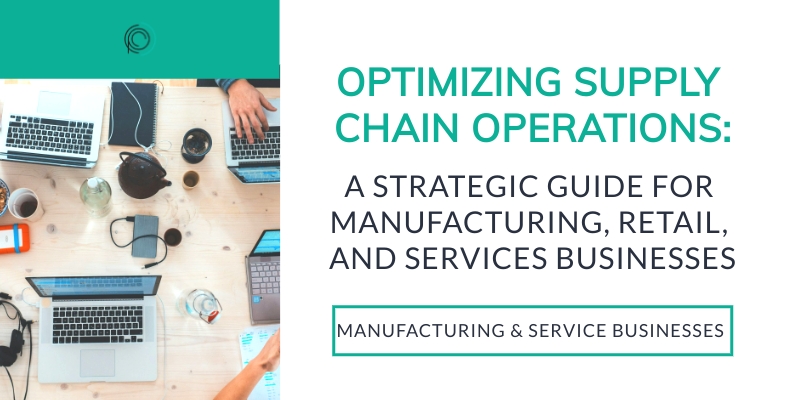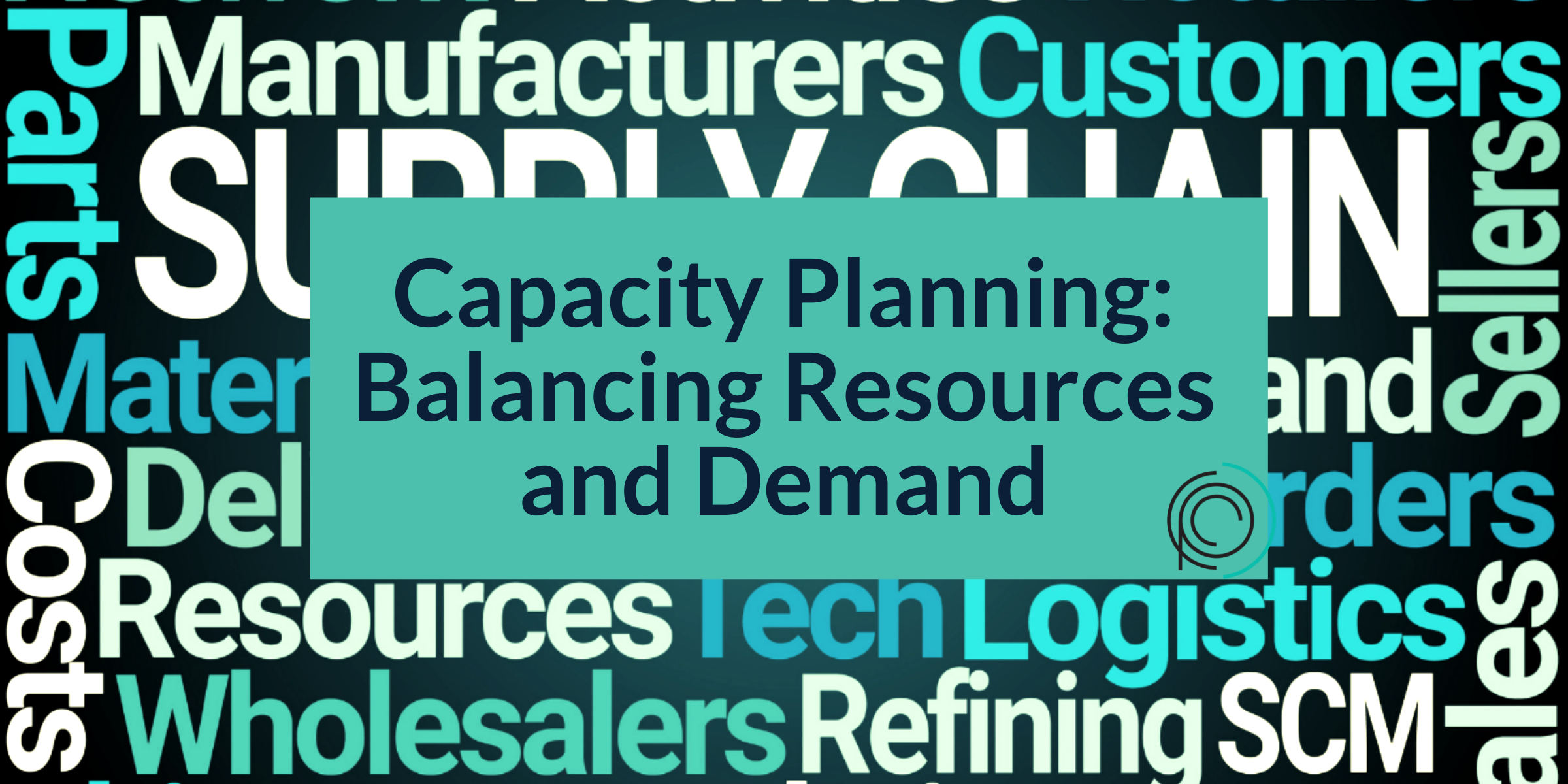The Supply Chain Landscape: Why It Matters More Than Ever
Every business, whether product-based or service-driven, operates within a supply chain—it’s just a matter of scale and complexity. For some, it involves navigating an intricate web of suppliers, manufacturers, logistics providers, and distribution networks. For others, it’s as simple as procuring office supplies, managing digital infrastructure, or coordinating with service vendors. Even independent consultants rely on a supply chain, from the software they use to the partners who support their work. No matter the industry, every business depends on a series of interconnected inputs, processes, and outputs that define its supply chain.
Once seen as a behind-the-scenes function, supply chain operations have evolved into a strategic driver of profitability, resilience, and competitive advantage. Whether in manufacturing, retail, or services, a company’s ability to manage its supply chain effectively determines how well it adapts to disruptions, meets customer expectations, and stays ahead in an ever-changing market.
Supply chain management historically has been thought of as a relatively straightforward, step-by-step process—raw materials come in, products are manufactured, goods are stored, and then they are shipped to customers. This linear approach assumes that each stage operates independently and sequentially, with minimal interaction beyond handing off responsibilities to the next stage.
The challenge? Many businesses still approach supply chain management as a linear process rather than a dynamic, interconnected ecosystem. Success requires a shift in mindset—understanding the unique supply chain dynamics within your industry and proactively addressing potential risks before they escalate into costly failures.
Modern supply chains are far more complex and interconnected today than ever before. They function as dynamic ecosystems where every component—suppliers, logistics providers, manufacturers, warehouses, retailers, and even customers—continuously influence one another. A delay in raw materials, for instance, doesn’t just affect production; it cascades into inventory shortages, missed sales, increased costs, and customer dissatisfaction. Similarly, real-time data from customers can immediately impact demand forecasting, production planning, and distribution strategies.
To thrive in today’s volatile environment, businesses need to shift from a linear mindset to a networked, ecosystem-driven approach, leveraging real-time data, automation, and integrated decision-making to ensure agility and resilience.
Understanding Supply Chain Operations by Industry
Manufacturing Supply Chains
For manufacturers, supply chain operations encompass everything from sourcing raw materials to production, warehousing, and distribution.
Key focus areas include:
-
Supplier Relationship Management – Ensuring reliable sourcing of raw materials to avoid production delays.
-
Inventory Optimization – Balancing just-in-time (JIT) strategies with buffer stocks to mitigate supply chain disruptions.
-
Production Planning & Scheduling – Aligning demand forecasts with production capacity to avoid bottlenecks.
-
Logistics & Distribution – Efficiently moving products to retailers, wholesalers, or direct-to-consumer channels.
-
Quality Control & Compliance – Maintaining stringent quality checks to meet regulatory and customer standards.
Retail Supply Chains
Retailers depend on an efficient supply chain to meet customer demand while minimizing excess inventory.
Critical areas include:
-
Demand Forecasting & Inventory Management – Leveraging data analytics to predict demand and optimize stock levels.
-
Supplier & Vendor Management – Establishing strong supplier partnerships for consistent product availability.
-
Omnichannel Fulfillment – Coordinating online and brick-and-mortar sales channels to meet customer expectations.
-
Reverse Logistics – Managing returns and exchanges efficiently to minimize losses and enhance customer satisfaction.
-
Last-Mile Delivery – Streamlining final delivery processes for speed, cost-effectiveness, and customer convenience.
To effectively manage these key areas, businesses must embrace interconnected technology that enables real-time visibility, automation, and data-driven decision-making. Advanced analytics and AI-powered forecasting tools help optimize demand planning and inventory levels, reducing stockouts and excess inventory.
Supplier relationship management platforms enhance collaboration and communication, ensuring consistency in product availability. Integrated omnichannel fulfillment systems synchronize online and in-store operations, allowing businesses to meet customer expectations seamlessly.
Meanwhile, reverse logistics solutions streamline returns and exchanges, minimizing losses and improving customer satisfaction.
Lastly, last-mile delivery technology, including route optimization software and real-time tracking, enhances efficiency, reduces costs, and provides a superior customer experience. By leveraging interconnected technology across these critical areas, businesses can create a more agile, responsive, and resilient supply chain.
Service-Based Supply Chains
Service-based businesses often overlook the fact that they, too, have a supply chain. The term is traditionally associated with manufacturing, logistics, and the movement of physical goods—raw materials, imports, exports, and production components like metal, plastic, or electronics. However, in service-based industries, supply chain operations revolve around managing resources, procurement, and customer experience. These elements are just as critical in ensuring efficiency, consistency, and business continuity.
Focus areas include:
-
Vendor & Partner Networks – Ensuring service providers, suppliers, and subcontractors align with operational goals.
-
Workforce Planning & Scheduling – Optimizing human resources to meet demand fluctuations.
-
Technology & Infrastructure Management – Ensuring digital platforms and IT systems support seamless service delivery.
-
Customer Experience Management – Aligning service delivery with customer expectations and feedback loops.
-
Regulatory & Compliance Oversight – Meeting industry standards and legal requirements to avoid risks.
Regardless of industry, managing these supply chain elements effectively requires interconnected technology that enables real-time visibility, automation, and data-driven decision-making. AI-powered forecasting tools help optimize workforce planning and service capacity, while integrated vendor management systems enhance collaboration and reliability. Digital platforms synchronize omnichannel service delivery, ensuring consistency across touchpoints. Meanwhile, regulatory compliance software streamlines risk management, and customer experience platforms create feedback loops for continuous improvement. By embracing interconnected technology, service-based businesses can build a more agile, responsive, and resilient supply chain—one that supports operational excellence and long-term growth.
What You Need to Do Today to Be Proactive
Regardless of your industry, taking a proactive approach to supply chain management can make or break your business.
Here’s how you can get ahead:
1. Invest in Supply Chain Visibility & Data Analytics
A lack of real-time visibility into your supply chain can lead to inefficiencies, costly disruptions, and missed opportunities for optimization. To stay ahead, businesses must implement supply chain management software that provides end-to-end transparency, enabling real-time tracking of inventory, shipments, and supplier performance.
Predictive analytics plays a critical role in proactively managing supply chain risks. By leveraging AI and machine learning, businesses can analyze historical data, identify demand patterns, and anticipate fluctuations before they impact operations. This allows for smarter inventory planning, reducing both stockouts and excess inventory that ties up capital.
Additionally, supplier risk monitoring is essential to prevent disruptions. Advanced analytics tools can assess supplier reliability by tracking factors such as on-time delivery rates, financial stability, and geopolitical risks that may affect sourcing. This enables businesses to make informed decisions about diversifying suppliers or securing backup options before issues arise.
Logistics optimization is another key benefit of enhanced visibility. Real-time data allows businesses to monitor transportation routes, identify bottlenecks, and optimize shipping strategies for cost efficiency and speed. By integrating Internet of Things (IoT) sensors, RFID tracking (attaching small tags to items), and cloud-based platforms, companies can gain full transparency into every stage of their supply chain.
Ultimately, investing in supply chain visibility and analytics leads to greater agility, resilience, and cost savings. With access to real-time insights, businesses can shift from reactive problem-solving to proactive decision-making, ensuring a more efficient and responsive supply chain.
2. Strengthen Supplier & Partner Relationships
A resilient supply chain is built on strong, collaborative partnerships that foster trust and mutual benefit. Start by diversifying your supplier base to reduce dependency on a single source and minimize the impact of disruptions. Look beyond price by negotiating long-term agreements that offer stability and security for both parties, while also providing room for flexibility in response to market changes. It’s crucial to collaborate on risk management strategies, such as sharing insights on potential disruptions, implementing contingency plans, and jointly exploring alternative sourcing options. Regularly engaging with suppliers to align on goals, performance metrics, and quality standards ensures continuous improvement and strengthens the foundation for long-term success. By nurturing these relationships, you create a more adaptive and responsive supply chain, better equipped to handle uncertainty and market fluctuations.
3. Adopt Digital Transformation & Automation
Embracing digital transformation and automation is a game-changer for streamlining operations, reducing human error, and driving data-driven decision-making. One key area for improvement is AI-powered demand forecasting, which uses machine learning algorithms to predict customer demand more accurately, allowing you to adjust production and inventory levels proactively. This minimizes stockouts, reduces excess inventory, and optimizes resource allocation.
In logistics, robotic process automation (RPA) can automate repetitive tasks, such as order processing, shipment tracking, and inventory management. This not only increases efficiency but also frees up valuable human resources to focus on more strategic activities. RPA can also help streamline fulfillment processes, reduce delays, and improve customer satisfaction.
Blockchain technology offers unprecedented transparency and traceability in the supply chain. By implementing blockchain, you can create an immutable record of every transaction, from sourcing raw materials to final delivery. This not only helps reduce fraud but also provides full visibility into every step of your supply chain, enabling you to identify inefficiencies, verify product authenticity, and enhance trust with customers and partners. Adopting these advanced technologies empowers your business to stay agile, improve operational efficiency, and build a more resilient supply chain.
4. Prioritize Sustainability & Ethical Sourcing
Consumers and regulators are increasingly focused on sustainable supply chains. Implement eco-friendly practices, such as optimizing logistics routes to reduce emissions, sourcing from ethical suppliers, and minimizing waste in production or service delivery.
5. Enhance Risk Management & Contingency Planning
Disruptions—whether caused by geopolitical events, natural disasters, cyber threats, or supply chain bottlenecks—can have a severe impact on your operations. To protect your business, it’s essential to develop comprehensive contingency plans that outline clear steps for responding to various scenarios. These plans should include predefined actions for different types of risks, such as alternative sourcing strategies, emergency communication protocols, and resource allocation plans that can be swiftly activated when needed.
Diversifying sourcing strategies is one of the most effective ways to mitigate risk. By working with multiple suppliers across different geographies, you reduce your reliance on any single source and limit your exposure to localized disruptions. This might involve considering nearshoring or reshoring options, as well as diversifying transportation routes and modes to avoid single points of failure.
Additionally, regular risk assessments are crucial to ensure that your plans stay relevant as new threats emerge. These assessments should involve reviewing vulnerabilities in your supply chain, evaluating potential impacts from current or future geopolitical tensions, assessing climate-related risks, and considering cyber threats. Involving key stakeholders and suppliers in these assessments can lead to more robust, proactive solutions.
Finally, it’s important to continuously monitor risk indicators, whether they’re economic, environmental, or technological. By leveraging real-time data and analytics, you can quickly identify early warning signs of potential disruptions, allowing you to take preemptive action. Building a culture of resilience within your organization, where risk management is integrated into everyday decision-making, ensures that your operations are better equipped to withstand unexpected challenges and maintain business continuity.
6. Optimize Inventory & Logistics for Agility
Effective logistics management requires a balance between maintaining the right inventory levels and ensuring seamless fulfillment. Implementing demand-driven replenishment models can help predict and respond to fluctuations in demand, reducing stockouts and excess inventory costs. If you manage your own logistics, consider investing in warehouse automation to improve accuracy and efficiency. For added flexibility, leveraging third-party logistics (3PL) partners can provide scalable solutions without the overhead of in-house operations. Whether managing logistics internally or through partners, optimizing supply chain visibility and leveraging real-time data is key to maintaining agility and resilience.
7. Build a Customer-Centric Supply Chain
At the core of an efficient supply chain is customer satisfaction. Leverage real-time tracking, enhance delivery speed, and offer seamless return processes to create a supply chain that aligns with evolving customer expectations.
Future-Proofing Your Supply Chain
Supply chain operations are no longer just about moving products from point A to point B—they are a strategic function that drives business success. Whether you’re in manufacturing, retail, or services, staying ahead requires a proactive approach that embraces digital innovation, risk management, and customer-centricity. By taking action today, businesses can build supply chains that are not only efficient but also resilient, adaptive, and prepared for the challenges of tomorrow.







